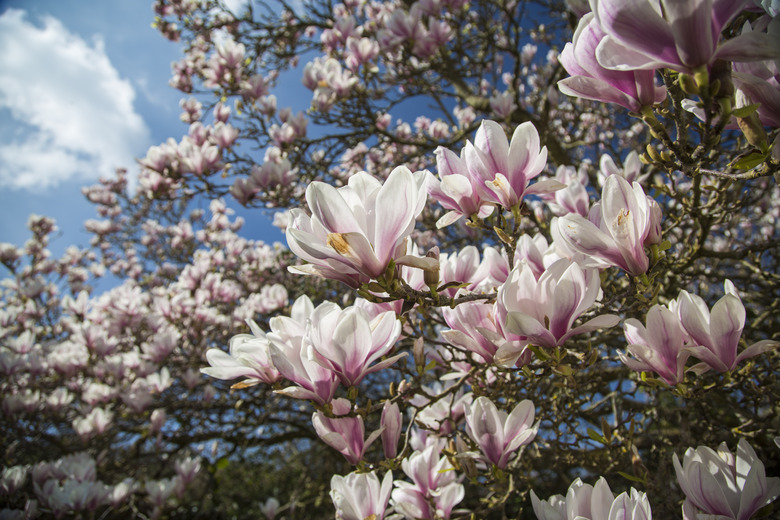Are Berries From Magnolia Trees Toxic?
We may receive a commission on purchases made from links.
Anyone who loves magnolia blossoms will rejoice in the fact that there are dozens of species of these stunning shrubs and trees. Some are evergreen, others deciduous. Some have huge blossoms, others offer smaller flowers. Some exude enough sweet fragrance to fill the garden. Others have no scent.
Now, about the magnolia berries. Given the vast range of magnolia species out there, it is likely that the berries are not one-size-fits-all either. However, there is not extensive information on the toxicity of magnolia berries, so it is probably best not to eat any.
Tip
There is not enough scientific information available on the dozens of magnolia species to make a blanket statement about the toxicity of their berries. The wisest course is not to eat them.
Meet the Magnolia Genus
Meet the Magnolia Genus
Magnolias (Magnolia spp.) are beloved features in modern gardens with their exquisite flowers and, often, powerful fragrance. However, the species is ancient. Magnolias are thought to be among the most primitive plants in evolutionary history, one of the first flowering plants on the planet. Fossil records establish that, over 100 million years ago, species of magnolia flourished in what is now Europe, North America, and Asia. In fact, these trees developed before hovering insects, like bees, and evolved for pollination by wingless beetles.
There are over 100 species of magnolias today, with native colonies only in China and the southern parts of the United States. Among these are popular dwarf cultivars for smaller gardens. Most are cultivated in landscapes for their showy, fragrant flowers, shiny leaves, and exotic fruit.
Appreciate Magnolia Features
Appreciate Magnolia Features
Whether small (like the bush-size star magnolia) or huge (like the massive Southern magnolia), most magnolia shrubs and trees are planted for their impossibly beautiful blossoms. These range from 3 to 12 inches in diameter and may be extremely fragrant. There is no one answer regarding when and how long magnolias bloom. It varies from species to species.
The foliage is also very appealing, while not as much a draw as the magnolia flowers. Leaves can be as large as 10 inches long and 4 inches wide and come in different shades of green. The most typical coloration is dark, lustrous green on the top side and lighter green on the underside.
The fruits are fascinating. They start as red, fuzzy seed cones, growing up to 8 inches long. When they are mature in autumn, the cones split open. This exposes the bright red seeds inside which are often eaten by wildlife.
Avoid Eating the Berries
Avoid Eating the Berries
You can find dozens of articles on the Internet that say that magnolia berries are not toxic to humans or animals. Some articles provide no substantiation for this claim and most of those that do reference a website of the University of Arkansas Division of Agriculture. The website is titled "List of Toxic Plants," and that list includes the Southern magnolia tree (Magnolia grandiflora). This plant is identified as belonging to Toxicity Category 4, which is explained as "usually non-toxic to humans."
While this provides some evidence that someone eating different parts of the Southern magnolia will likely not die, the website doesn't distinguish between flowers, leaves, berries, or bark. And the "usually" should give one pause. Further, other websites suggest that some species of magnolia seeds are toxic — unfortunately without providing any evidence backing that claim.
Since wildlife regularly eat magnolia seeds and various parts of the trees have been used for centuries in folk medicine, it is tempting to treat these plants as nontoxic. And well they may be. But given this lack of substantiation, the wisest course is to refrain from eating magnolia berries.
